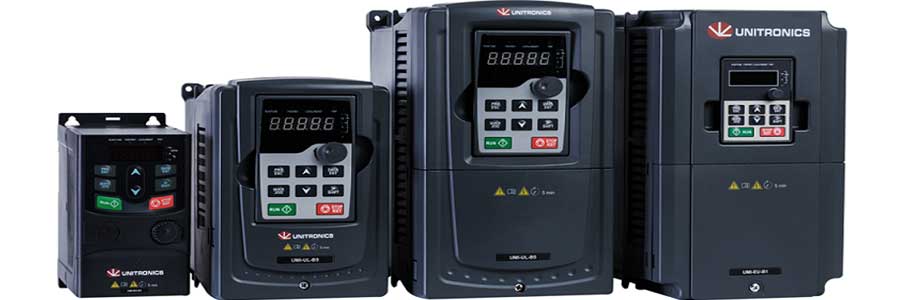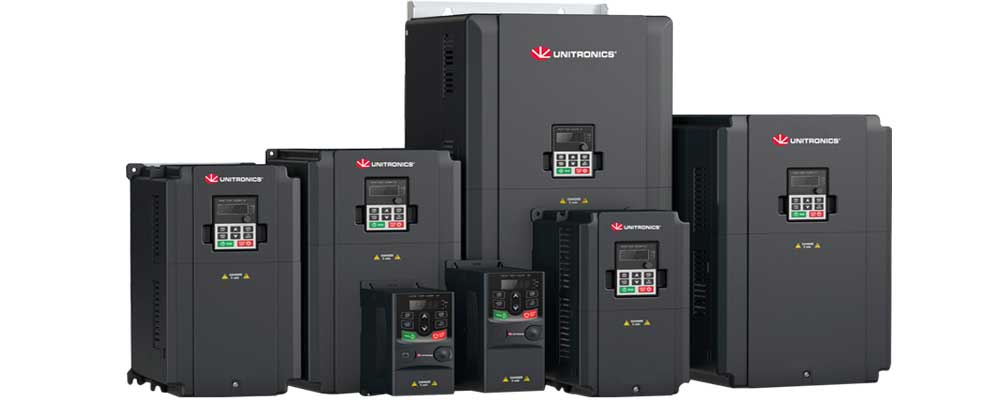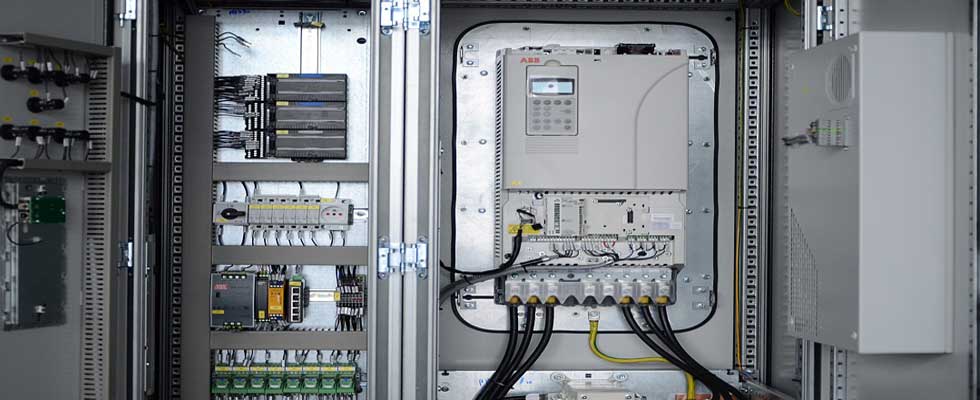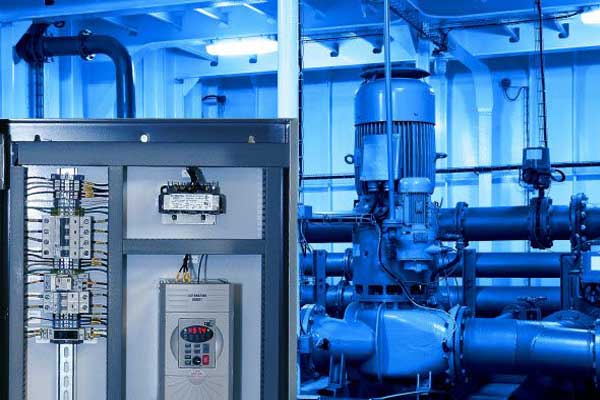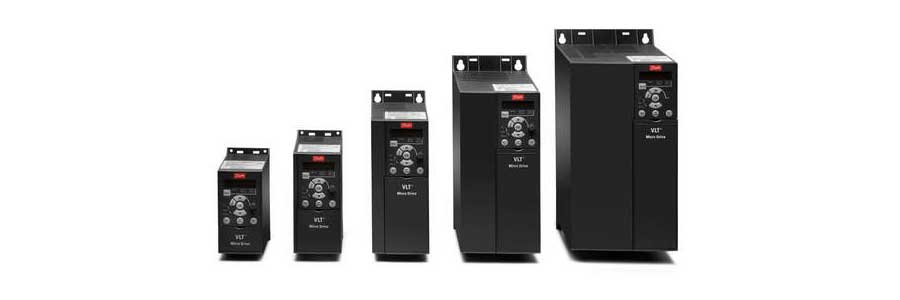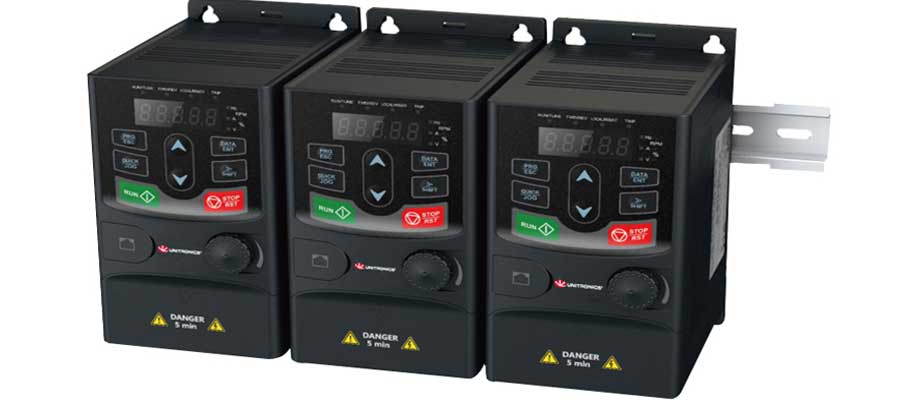How Variable Frequency Drive Save Energy
As industries and businesses intensify their efforts to save energy and cut costs, technologies that optimize energy efficiency take center stage. Among the notable solutions are Variable Frequency Drives (VFDs). VFDs, which are also known as adjustable speed or variable speed drives, offer an advanced method of controlling motor speed and torque, leading to substantial energy savings.
In this blog post, we’ll explore the sophisticated mechanism behind VFDs and how they champion energy conservation.
Benefits of Energy Savings with VFD
The benefits of energy savings with VFDs are numerous:
- Reduced Energy Consumption: VFDs adjust motor speed to match demand, preventing energy waste.
- Cost Savings: Less energy usage translates to lower utility bills, making VFDs an economically sound choice.
- Extended Equipment Life: By reducing mechanical stress, VFDs can extend the lifespan of your equipment.
- Improved Process Control: VFDs offer precise control over motor speed, improving overall process efficiency.
- Decreased Maintenance Costs: With fewer machine breakdowns, the maintenance costs are significantly reduced.
- Lower Emission Levels: By consuming less power, VFDs contribute to a reduction in greenhouse gas emissions.
- Flexible Operation: VFDs provide the flexibility to optimize motor speed for a range of applications.
Investing in VFDs can yield significant energy savings and positively impact both operational costs and the environment.
Understanding VFD: What They Are and How They Work
Delving into the world of Variable Frequency Drives (VFDs), we uncover sophisticated devices that control motor speed. Essentially, a VFD adjusts the frequency and voltage of the power supply, thus manipulating the speed and torque of AC induction motors. These versatile mechanisms find extensive use in various industries, including HVAC systems, pumps, and fans.
By allowing precise motor control, VFDs boost system efficiency, substantially reduce energy consumption, and improve the operational lifespan of the equipment. As we decode the workings of VFDs, we will appreciate the true brilliance behind this pivotal innovation in power control.
Basic Mechanism of VFD
At its core, a Variable Frequency Drive (VFD) functions as an intelligent power converter. By manipulating the frequency of the power supply to an AC motor, it effectively alters the motor’s speed. This is accomplished by transforming the incoming fixed-frequency AC power into DC, then converting it back into a variable-frequency AC.
Through this intricate process, a VFD facilitates the precise control of motor speed and torque, seamlessly matching them to varying load requirements. This smart power conversion mechanism is the cornerstone of VFD’s impressive energy-saving capabilities.
The Role of a VFD Motor Controller
A VFD Motor Controller plays a crucial role in the operation of an AC motor. It dictates the motor speed and torque by adjusting the voltage and frequency of the power supplied to the motor. Consequently, the VFD Motor Controller allows for precise control over the motor’s output, adapting it to the ever-changing load demands.
In essence, it facilitates a tailored energy input to match exact operational requirements, eliminating wasteful energy expenditure and promoting overall system efficiency.
The Use and Benefits of an AC Variable Speed Drive
An AC Variable Speed Drive is an energy-efficient tool used to control the speed of an AC motor. By varying motor speed based on demand, it reduces unnecessary energy consumption. The benefits are two-fold: enhanced operational efficiency and significant energy savings.
By aligning energy use with actual demand, an AC Variable Speed Drive can significantly decrease overall power usage, leading to cost savings and a reduced carbon footprint. It is a practical, sustainable solution for managing energy consumption in a wide range of applications.
Efficiency of VFD
The efficiency of a VFD is remarkable, turning what was once wasted power into substantial energy savings. This is achieved by precise speed control, and matching power output with the actual needs of the driven equipment. Instead of running at constant full speed, motors can adjust to meet real-time demand.
This results in lower energy consumption, reduced wear and tear on the equipment, and less downtime due to maintenance. Ultimately, the VFD enhances the overall operational efficiency of a system, leading to both economic and environmental benefits.
The Function of a Frequency Drive Motor
At the heart of a VFD system is the frequency drive motor, which plays a critical role in achieving energy efficiency. Instead of operating at a fixed speed, this motor adjusts its speed in response to the variable frequency provided by the VFD. This allows it to operate precisely according to demand, optimizing energy use.
The ability to dynamically adjust speed reduces unnecessary power consumption and significantly contributes to the overall energy-saving capability of the system. This function of the frequency drive motor epitomizes the smart use of technology for environmental sustainability.
The Impact of VFDs on Energy Efficiency
How VFDs Promote Energy Savings
Variable Frequency Drives (VFDs) are notable game-changers when it comes to energy savings. By modulating motor speeds to meet specific demands, VFDs ensure that a motor operates only at necessary power levels, thereby reducing energy waste.
Instead of the conventional method of full-speed operation and mechanical flow control, VFDs control electrical input, leading to more precise, efficient, and energy-saving operations. Moreover, reducing motor speed by even a small percentage can result in significant energy savings, demonstrating the exponential relationship between motor speed and power usage.
VFD Power Consumption vs. Energy Savings
While it is true that VFDs consume power, the energy savings they facilitate outweigh their consumption, rendering them a net positive for energy efficiency. VFDs use power to convert the frequency of the electrical supply and to run control electronics.
However, their ability to modulate the speed of electric motors more than compensates for this power usage. By operating motors only at the necessary speeds, VFDs greatly minimize energy wastage, leading to substantial energy savings in the long run.
The efficiency of Variable Frequency Drives Working
The operational efficiency of VFDs is achieved through their ingenious design and functionality. By converting the incoming electricity’s frequency, VFDs can control the speed of the motor. The conversion process itself is quite efficient with modern drives, usually in the range of 95% to 98%.
By matching the motor speed to the load requirement, VFDs ensure that no energy is wasted in the process. This makes the overall system highly efficient and a massive boon for energy-saving efforts.
Use of VFDs in Different Motors for Energy Savings
VFDs can be used with various types of motors, such as induction motors, AC motors, and variable-speed motors. Each application can bring about energy savings. For example, with induction motors, VFDs can control the speed and torque by adjusting the motor’s electrical input, leading to significant energy savings.
Similarly, for AC motors, by varying the frequency of the power supply, VFDs can control the speed of the motor, thereby optimizing energy usage. With variable-speed motors, VFDs can provide even more granular control over motor speed, leading to further energy savings. The universal applicability of VFDs to different motor types enhances their value in the quest for energy efficiency.
Control Methods of VFDs
Speed Control Techniques for VFDs
Variable Frequency Drives (VFDs) employ several control methods to regulate motor speed, with the most common being Volts/Hz control, sensorless vector control, and direct torque control. In Volts/Hz control, the ratio of input voltage to frequency (Hz) is kept constant, offering a straightforward yet effective method for speed control. Sensorless vector control, a more advanced method, enables accurate speed and torque control without needing an encoder.
It accurately estimates motor characteristics, ensuring optimal efficiency. Direct torque control is even more sophisticated, directly controlling motor torque and flux, leading to superior dynamic performance. Regardless of the method, by finely tuning motor speed to match load requirements, VFDs significantly enhance energy efficiency.
Use of VFD Controllers for Energy Savings
VFD Controllers play a pivotal role in conserving energy. By adjusting the frequency and voltage supplied to the motor, VFD controllers can precisely control the speed of the motor. These adjustments are made in real-time in response to changes in the load requirement, ensuring the motor operates at optimal efficiency. When the load requirement is low, the VFD controller reduces the motor speed, resulting in less energy consumption.
Conversely, when the load requirement is high, it increases the motor speed, ensuring performance needs are met. This dynamic adjustment of motor speed prevents unnecessary energy consumption and results in substantial energy savings. Moreover, by reducing the instances of motor start-up, VFD controllers also help extend the motor’s lifespan, providing additional savings in terms of maintenance and replacement costs.
VFD in Various Motors and Systems
The Role of a VFD in an AC Motor
Variable Frequency Drives (VFDs) serve a vital function in the operation of AC Servo motors. AC motors are designed to run at a fixed speed, but real-world applications often require variable speed. Here is where a VFD comes in. By controlling the frequency and voltage of the power supplied to the motor, a VFD allows the AC motor’s speed to be adjusted according to the requirements of the application.
This precision control of motor speed not only enhances the efficiency of the system but also reduces wear and tear on the motor, prolonging its lifespan. Additionally, VFDs offer other benefits such as improved process control and reduced power surge during motor startup, contributing to significant energy savings.
VFD in Induction Motor: Enhancing Efficiency and Control
Induction motors are among the most widely used in industrial applications, and the addition of a VFD can greatly improve their efficiency and control. A VFD allows the induction motor to operate at variable speeds by changing the frequency of the electrical supply, giving more flexibility in speed control compared to traditional methods.
Moreover, VFDs enable soft starting, which reduces the mechanical stress on the motor during startup and results in energy savings. By precisely controlling the motor’s speed, VFDs also ensure the motor only uses the amount of energy necessary for the task, leading to significant energy savings and improved process efficiency.
Variable Frequency Drives in Electric Motor Systems
In electric motor systems, Variable Frequency Drives play a critical role in optimizing energy usage and improving system performance. By controlling motor speed, VFDs can match motor output to the specific demands of the system, reducing unnecessary energy consumption. This is particularly beneficial in systems with variable load requirements, such as HVAC systems, pump systems, and conveyor systems.
In these systems, the ability to adjust motor speed allows for precise control of system variables (like temperature, pressure, or flow rate), resulting in improved system efficiency and reliability. Moreover, the soft start capability of VFDs reduces the inrush current during motor startup, minimizing mechanical stress on the system and extending equipment life.
Comparing VFDs with Other Motor Speed Controllers
Differences and Similarities Between VFDs and Adjustable Frequency Drives
While both Variable Frequency Drives (VFDs) and Adjustable Frequency Drives (AFDs) are used for speed control in electric motors, they differ in certain aspects. Both devices manipulate the frequency of the power supply to control motor speed, but their control methods may vary.
VFDs use a method called Pulse Width Modulation (PWM) to control the voltage and frequency of the motor, providing a greater range of control and higher efficiency. On the other hand, AFDs, sometimes seen as an older technology, may use methods like Voltage/Frequency control, which are not as efficient.
However, these terms are often used interchangeably in many industries. In fact, a VFD could be seen as a type of AFD with more advanced features. Both are designed to provide precise control over motor speed, improve process control, reduce energy consumption, and extend equipment lifespan.
Differences and Similarities Between VFDs and Variable Speed Drives
The term “Variable Speed Drive (VSD)” is a general term that refers to any device or method that can control the speed of a machine, especially electric motors. VSDs can include both mechanical and electrical methods for controlling speed. On the other hand, a VFD is a specific type of VSD that controls motor speed by varying the frequency and voltage of the power supply.
Therefore, all VFDs are VSDs, but not all VSDs are VFDs. Both are designed to provide precise control over motor speed and are often used in similar applications. However, VFDs offer certain advantages such as improved energy efficiency, extended equipment life, and better process control due to their method of speed control, making them a popular choice in many industries.
Conclusion:
Variable Frequency Drives (VFDs) stand as an important energy-saving tool in motor-based systems. By controlling motor speed to meet task-specific needs, they significantly reduce energy consumption. Despite their complexity,
VFDs’ benefits overshadow those of other motor controllers, contributing to sustainability and efficiency. As we move towards a greener future, the relevance and use of VFDs are set to increase, paving the way for enhanced performance and reduced operational costs.

